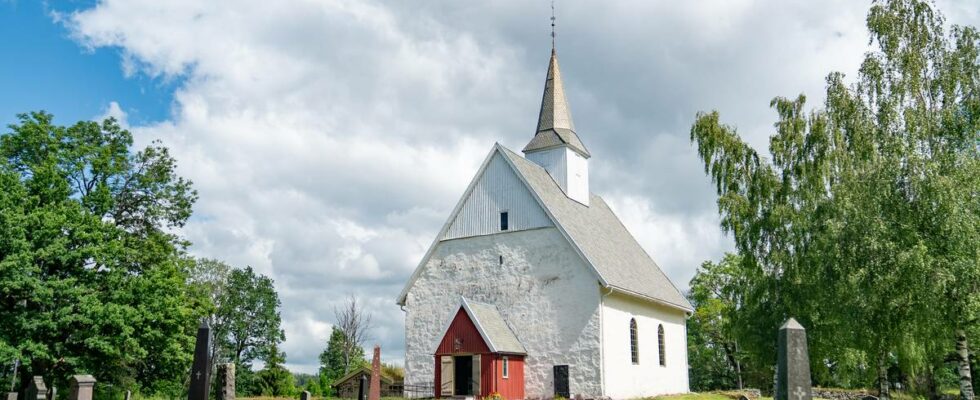– We know that the growth of mold in heritage-listed and listed buildings increases in line with the climate challenges, says assistant national antiquarian Audun Skeidsvoll. The National Archives has now entered into a contract with the Norwegian Institute for Cultural Heritage Research (NIKU) relating to mold and paintings. The contract has a value of NOK 120,000. The money will finance a project to investigate methods for monitoring and removing mould. Bjørg Agasøster, who is an architect at NIKU, says that the problem is increasing. In places where it is known that there was no mold five years ago, the scale is now quite large, according to the architect. – Something has happened, some tolerance limit has been reached. Biological degradation of historical material is a growing problem, says architect Bjørg Agasøster. Photo: Eli Bjelland / news – Serious ongoing outbreak – Andebu church in Vestfold has a serious ongoing outbreak of mold which affects vulnerable and valuable art and furnishings. We need to be better prepared to handle this problem, says Skeidsvoll. Property manager Kjell Atle Kjønnø in the Sandefjord church joint council says that the mold was first discovered in the church organ in the late winter of 2022. – We had to wash and clean all the pipes in the organ and mold was also found elsewhere in the church. Property manager Kjell Atle Kjønnø in Sandefjord ecclesiastical joint council. Photo: Philip Hofgaard / news In autumn 2023, representatives from NIKU visited twice. Then mold was discovered on two large paintings which were sent to Oslo for restoration. – It is fantastic that we are getting more research into this. Some struggle with mold and some struggle with other things, says Kjønnø. New mushroom species found Kjersti Marie Ellefsen is head of the conservation department at NIKU. She believes climate change must take the blame for the mold’s invasion of Andebu church. – A gradually more humid outdoor climate leads to the growth of mold species indoors, especially in older buildings. After the discovery of mold in the church organ, all the pipes had to be washed and cleaned. Photo: Philip Hofgaard / news The new project will explore and test effective and gentle treatment methods for the removal and monitoring of mould. Ellefsen indicates that mold thrives in moist air. – We have previously said that there was a limit of 65 per cent relative humidity for the fungus to thrive. Now they have come across new types of fungus that thrive in humidity down to 58 percent. – The new species of fungi, combined with increasing humidity, make this a bigger problem. – Need more knowledge Ellefsen admits that they know a little too little about how to clean vulnerable surfaces to prevent the mold from returning. – We need more knowledge to reduce the extent of the mould. Kjell Atle Kjønnø checks the pulpit in Andebu church for mold. Photo: Philip Hofgaard / news Several test panels and canvas have now been set up in churches in areas with increased rainfall. – We have focused on brick churches from the Middle Ages, and churches that are located on the coast and along the Trondheimsfjord, says Ellefsen. In addition to the NOK 120,000 from the National Archives, NIKU has also received money from the Research Council and Trøndelag County Council. Published 16.07.2024, at 07.08 Updated 16.07.2024, at 12.40 p.m
ttn-69
Mold ravages medieval church – believes it is due to climate change – news Vestfold and Telemark – Local news, TV and radio

